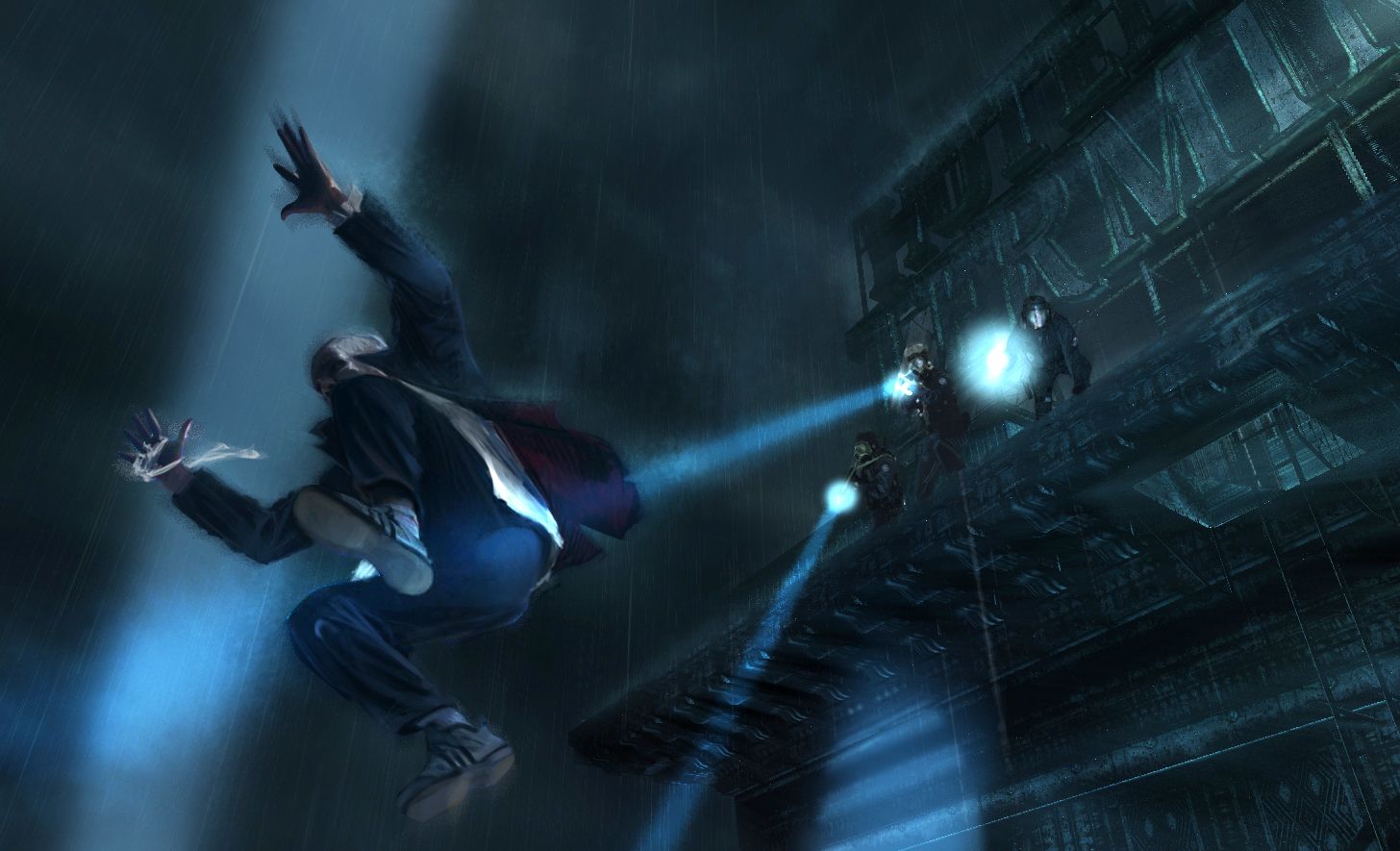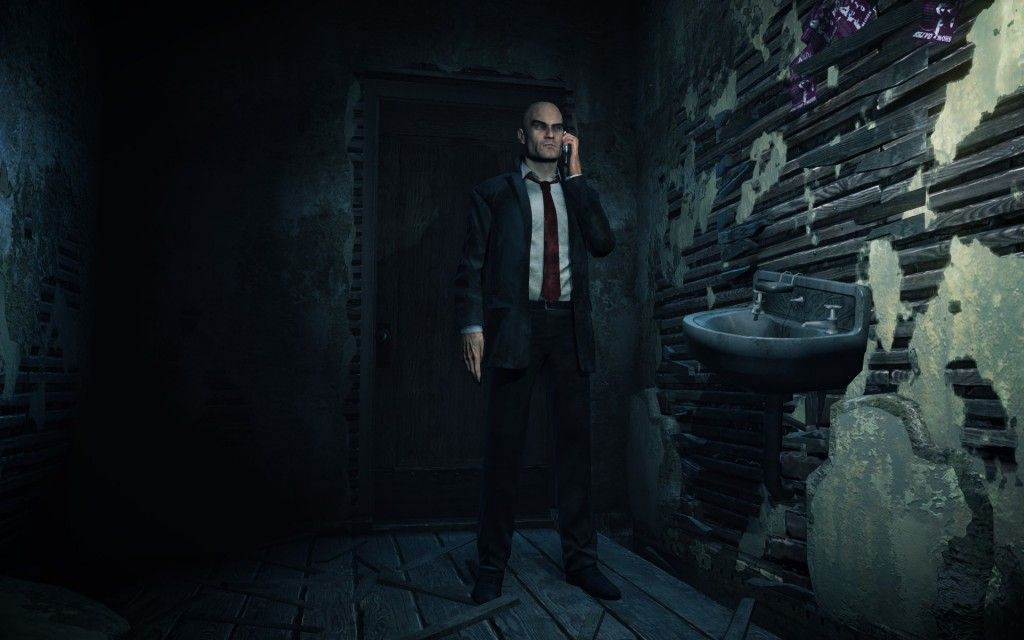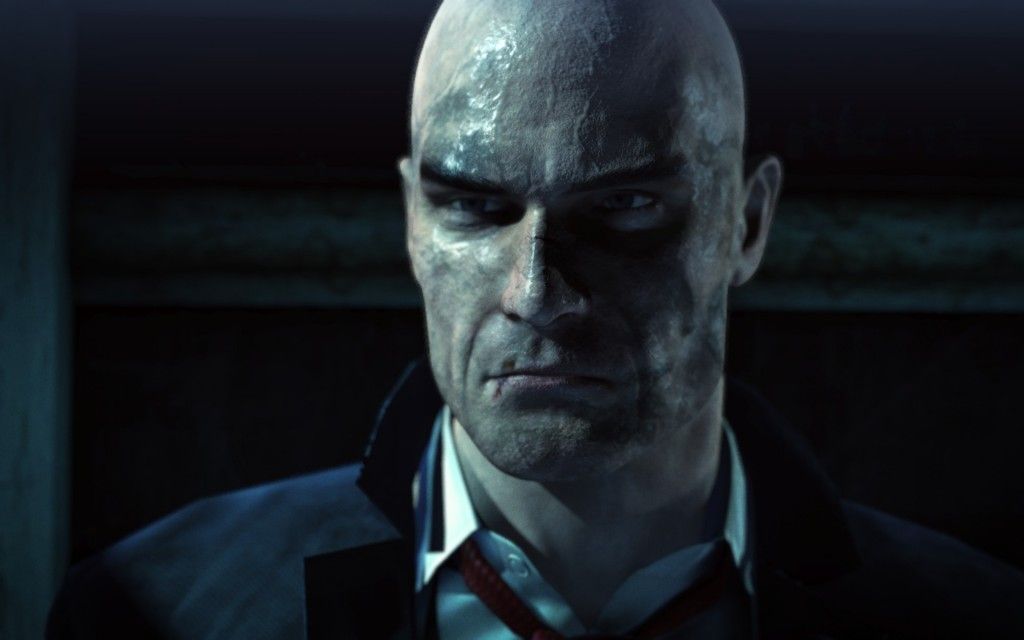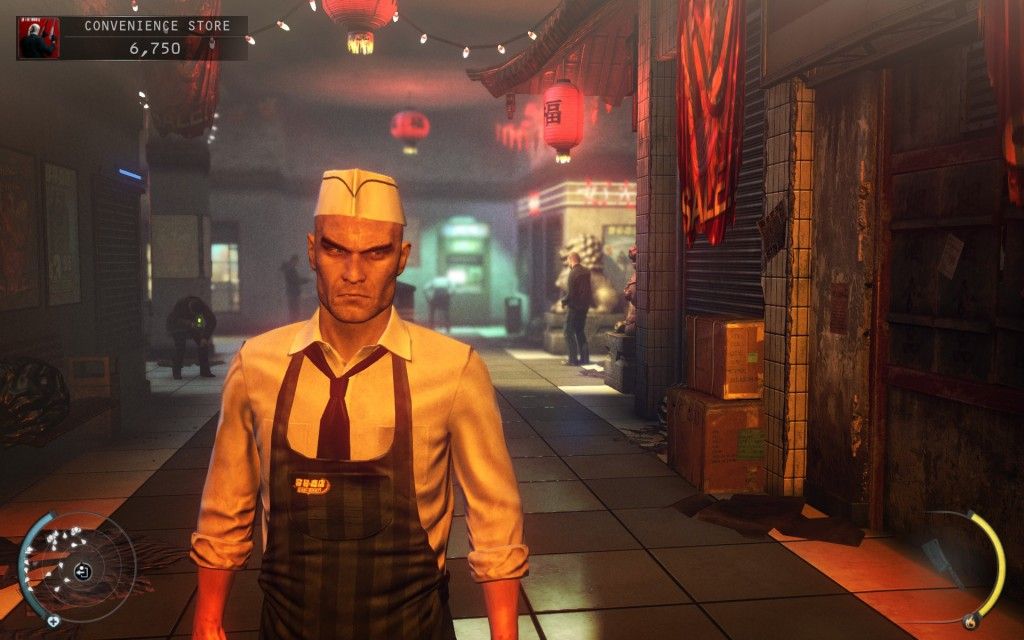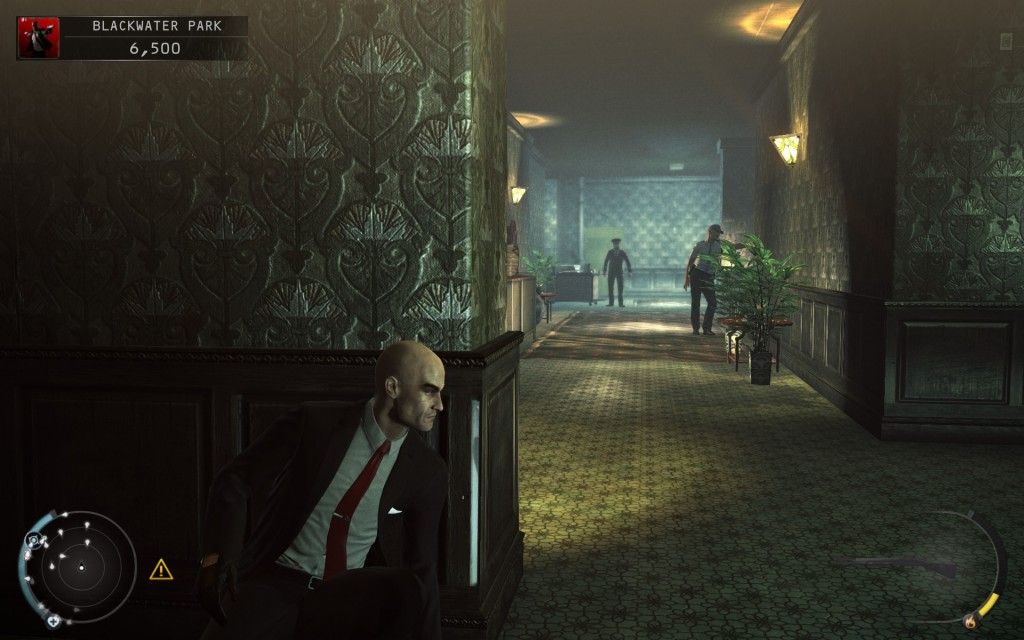IO-Interactive’s Hitman Absolution is the first game in the franchise to grace the hardware of the high-definition era, and with it comes a number of upgrades, enhancements and other modifications that are sure to divide both old and new fans of the silent assassin.
It’s clear from the start of Absolution that IO has focused significantly on providing the player with a more engaging narrative than its predecessors. The game boasts high production values, cinematic cut-scenes that transition smoothly between gameplay segments, great sound design and also pays considerable attention to the performances of its characters. The fundamental question is whether these ingredients have combined to form a compelling drama, worthy of our attention.
The story begins with Agent 47 being assigned a mission to eliminate Diana Burnwood who was his previous handler at the International Contract Agency (ICA). It is suggested that Burnwood recently betrayed the Agency, costing many people their lives, before vanishing into thin air. She now resides in an isolated mansion, protected by armed guards, where she is holding a young girl named Victoria who is considered highly important to the Agency. It doesn’t take long before 47 becomes entangled in a sordid web of lies with the Agency at the centre.
This initial premise is somewhat interesting, but unfortunately, despite the huge effort IO has clearly invested into Absolution’s narrative, it deteriorates throughout, and by the end there are barely two interesting plot-points to rub together and you’ve all but stopped caring about the fate of Victoria (if you ever did).
To understand what went wrong with Absolution’s story, let’s start with the characters. The game is by no means in short supply of flamboyant personalities - there are arguably too many - which is part of the problem. Maybe it just comes with the territory, but basically everyone 47 stumbles into throughout his latest killing-spree has some kind of personality disorder; whether it’s evidence of blatant vulgarity, narcissism, sociopathy, sadism or characters who simply maintain completely conflicting motives, they all fall flat.
IO utilized motion capture technology to create the characters’ performances in Absolution which overall are good. The animation is of a high quality, minus a few strange facial anomalies (Blake Dexter’s mouth just seems odd at times), but it is the writing that really lets Absolution down. The villains all quickly devolve into superficial caricatures that won’t garner any emotional investment from the player. Even the infamous ‘Saints’ are forgettable; appearing in a single mission, they basically serve as latex-clad mercenaries who do nothing but patrol the level like every other guard until it’s time for their inevitable demise.
Even though Absolution’s story is largely a failure, I can respect IO’s willingness to take the franchise in a new direction. Despite its shortcoming’s, the decision to create a game with a much more interconnected narrative structure has led to several positive results in other areas of the game’s design (more on this later).
The first major positive for Absolution is that it’s easily one of the best looking games this year, and if you own a machine capable of running it on ultra settings, it’s truly a sight for sore eyes. Thanks to IO’s Glacier 2 engine, Absolution looks fantastic in almost every area; whether it be the game’s lighting, animation, environments, texture detail, and even the menus/interface. The only graphical issues I encountered were occasional clipping and some facial pop-in during the early Chinatown mission where there are large crowds of NPCs.
Agent 47’s character model is also one of the best in the business. Glacier 2 exposes every pore, every scar, blemish, smudge and sleep-deprived eye that make up the aging killer. You really get a sense of the conditions 47 is dealing with as he moves from one dangerous situation to the next. The sweat, rain, dirt, blood, bruises and scars all come along for the ride, and the result is a simply phenomenal level of detail being conveyed via 47’s rugged face alone. He may just have the prettiest bald head I’ve ever seen in a video game (sorry Kratos).
Glacier 2 doesn’t just amount to a (not so) pretty face though, it also allows Absolution to render impressive cloth simulations that make the mere act of moving 47 around his environment a pleasure. The subtle motions of 47’s blood-red tie and the way his blazer adapts to his change in stance bring his character to life like few others have before; he’s simply a delight to observe. Absolution also boasts complex crowd simulations that populate lavish locales that include a strip-club, busy train station and Chinatown.
Now for where Absolution really shines, and what is definitely the franchise’s most important aspect: the gameplay. IO has improved practically every facet of the Hitman gameplay experience with Absolution by refining several key mechanics from prior games in the series. There are some divisive design choices present, but players transitioning from Bloody Money to Absolution will certainly appreciate most of the latter’s modernizations, which help to make 47 the most lethal Hitman yet.
The control-scheme has been revamped and allows for a level of fluidity not possible in previous games in the franchise. IO has implemented a much-needed cover-system into Absolution, allowing 47 to quickly snap to suitable surfaces and efficiently switch between them, silently. The shooting also feels surprisingly good for a game with a dominant focus on stealth gameplay. The weapons feel and sound fantastic to unleash when you’re caught in a hostile situation and the way in which NPCs react to different bullet-types is also highly impressive.
A significant new feature for Absolution is the addition of an ability called ‘Instinct’, which exposes nearby areas of interest to the player, such as obtainable objects, doors, general hints, and nearby NPCs. For those familiar, Instinct has much in-common with the ‘Detective Mode’ found in Rocksteady’s Batman: Arkham Asylum. Instinct also allows 47 to engage in ‘Point Shooting’, an ability allowing players to target several enemies before pulling the trigger; it’s similar to Red Dead Redemption’s ‘Dead Aim’ mechanic. Certain players may find Instinct to have diluted the Hitman franchise’s challenging nature, but it is an undeniably useful tool and one that is never imposed upon the player.
47’s Instinct ability also impacts the game’s new disguise system. Fooling NPCs into believing you’re one of them is no easy feat in Absolution. Simply grabbing a disguise and confidently strolling through a restricted area will rarely go unnoticed. Each disguise gives 47 the authority to enter certain areas, but nearby NPCs dressed in similar uniforms to yours will quickly realize that you aren’t who you imply you are; this is where Instinct Mode becomes relevant. Whether you’re disguised or not, visual prompts will appear on-screen to let you know how close NPCs are to realizing you’re trespassing. Activating Instinct whilst disguised will help to combat NPCs’ suspicions of you for a short time (Instinct is a limited resource). It’s a useful system that can help you escape a tough situation and one that adds a risk/reward for those who opt to use disguises.
At this point, veteran players of the franchise may be crying “dumbed-down, dumbed-down!”, but never fear, IO has you covered. Absolution features five difficulty settings starting with ‘Easy’ and ending with ‘Purist’. Personally, I found my first play-through on ‘Normal’ to be a challenging experience, although, it was surprising to see how many bullets 47 could absorb before hitting the floor. Regardless of this, those who want to really test themselves will want to experience Purist mode. It removes the entire HUD, all hints/guides, the score system (which certain players will likely be glad to see go) and Instinct can only be used for Point Shooting and when disguised. Even for experienced players, IO doesn’t recommend starting on the Purist difficulty, as you’re expected to know Absolution like the back of your hand. The Purist difficulty setting’s description specifically states: “This is a challenge for a true perfectionist. You know every rule, every detail, and all the environments by heart. Even then you will die trying”.
Once you finish the game for the first time, the Purist difficulty is definitely something you should try if you’re interested in a fresh challenge. It causes you to scan every inch of your environment before moving a muscle, and even then you’ll have to do some experimenting before you discover the perfect path to victory. It encourages exploration and creative thinking, which will often lead you to discover increasingly efficient and inventive strategies for completing each mission. It’s also great to experience the game free of the clutter that comes with the default interface (not to say that it doesn’t provide useful information).
There are a number of features from older Hitman titles that some will argue are ‘missing’ from IO’s latest game. It is true that Absolution’s single-player does not allow some of the freedoms that older Hitman games were popular for - the ability to visit 47’s hideout, the option to buy and upgrade weapons and the choice of which weapons to bring into a particular mission, being the most obvious exclusions. Some will say that these omissions by IO are detrimental to the experience, but personally, I didn’t miss the opportunity to visit a hideout in order to stare at 47’s weapon arsenal or fiddle around with weapons in menus because Absolution is already brimming with content.
There is a huge selection of weapons and items in the game, and because you can’t choose what you bring into each level, you’re forced to remain vigilant at all times, scanning for anything in the environment that could be useful to your objective. There are also plenty of different methods available for eliminating each of 47’s targets, and although some environments are more linear than others, there is a good mix of large open levels and compact missions; with the latter often becoming gateways to Absolution’s next extravagant scenario. These design choices are all a result of IO’s decision to make Absolution a story-driven experience; the lack of a hideout and custom weaponry make sense contextually, given the narrative. In fact, it is specifically stated at an early stage in the game that the Agency knows where all of 47’s secure locations are, so he is unable to seek refuge in them this time around.
Aside from enhancements pertaining to the single-player, Absolution’s biggest addition is a new mode called Hitman Contracts. Contracts enables players to revisit levels from the game’s single-player and create custom ‘hits’ for other players to attempt. In order to create a contract, a player must first achieve its requirements by themselves in order to prove it’s possible for other players to complete. There are several conditions a player can ascribe to a contract, such as whether you’re allowed to use a disguise, if you must hide all bodies, which weapon(s) you must use to eliminate the contract’s specific targets and so on. Players can create contracts with up to three targets and when they’ve proved the contract can be fulfilled, they can share it with the entire Hitman community to see who can earn the highest score.
It’s a fun diversion from the single-player portion of Absolution, and its existence relates to something mentioned previously regarding IO’s intention of providing a story-driven experience. IO has obviously understood that certain players would be disappointed by Absolution’s lack of a hideout to visit and the option to choose a custom load-out before each mission. Contracts is clearly IO’s attempt to appease both older fans wanting to see what they deem to be fundamental features of the Hitman franchise return, and newer fans looking for a more contemporary stealth experience, reinforced by a satisfying narrative.
Whether Absolution’s changes to the Hitman formula bother you will depend on your opinion of prior games in the franchise, but regardless of what IO’s latest iteration lacks, it remains a fabulous stealth-action game, peppered with some great moments. Those expecting a huge leap in the quality of IO’s storytelling will likely be disappointed, but for players who want a contemporary Hitman experience with a myriad of inventive and dastardly ways to manipulate the world around them, or simply float through it like a ghost, there are few games that can compete with Hitman Absolution.

